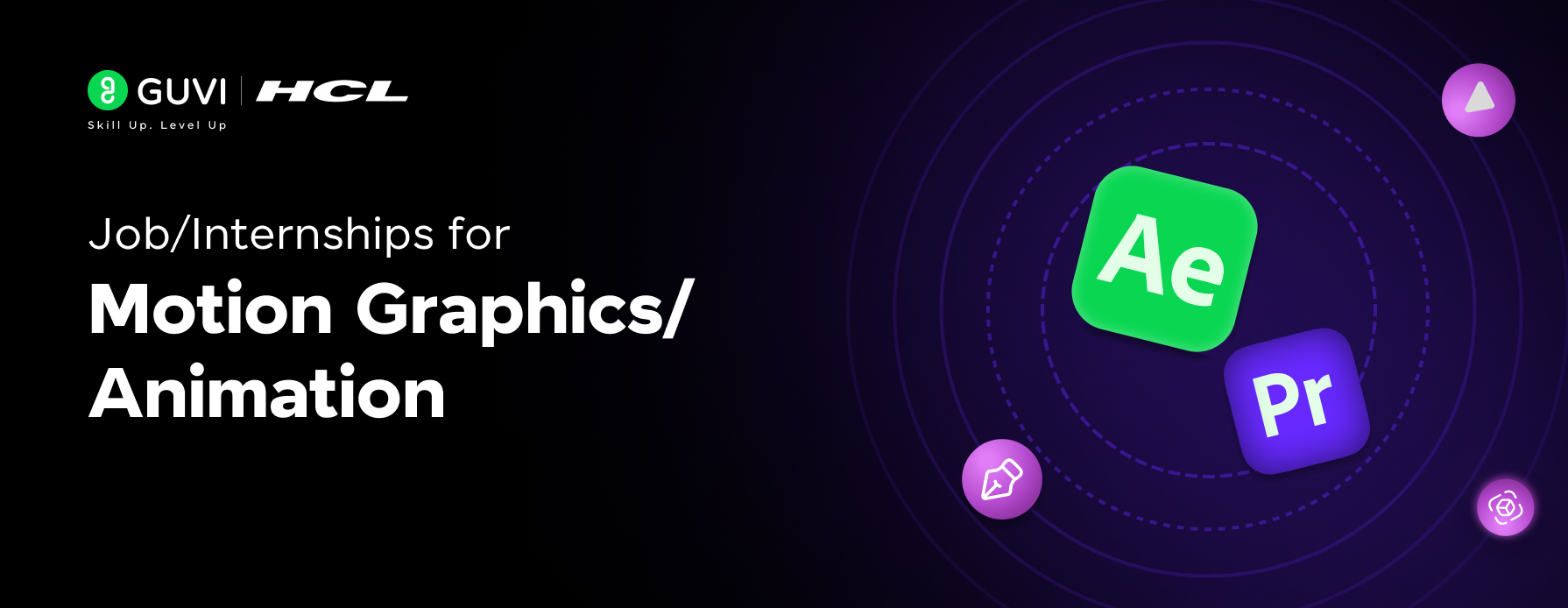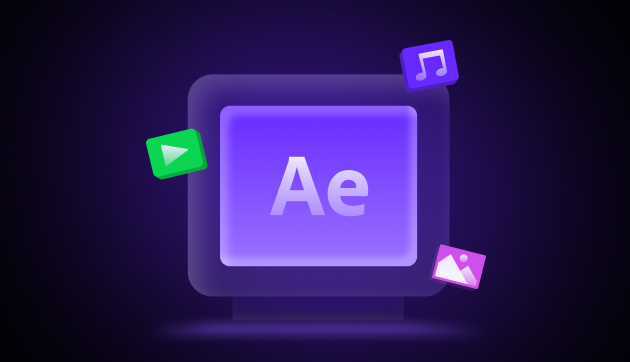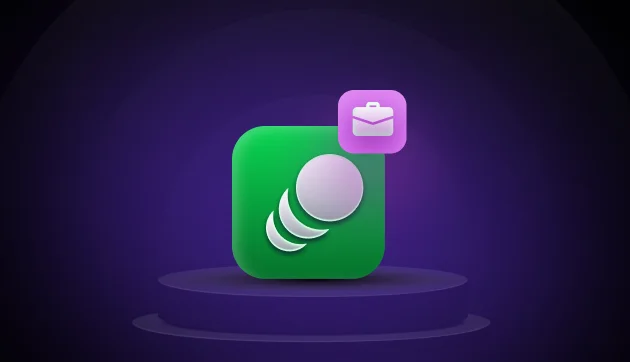
Best Practices in Motion Graphics for Brand Identity To Follow in 2025
Mar 17, 2025 5 Min Read 3483 Views
(Last Updated)
Having a strong brand identity is crucial. It sets you apart from your competition and makes your business memorable to your customers. One of the most effective ways is to use motion graphics for brand identity recognition and enhancement.
Think about Google or Apple. Both companies use animated logos and interactive graphics to create memorable brand experiences. While a well-designed static logo can certainly make an impact, transforming it into a lively, animated form adds significantly to its appeal.
In this blog post, we will explore the role of motion graphics in branding and how you can incorporate motion graphics into your branding strategy in 2025. By the end, you’ll have actionable insights to boost your brand identity using motion graphics.
Table of contents
- Understanding Motion Graphics in Branding
- Benefits of Using Motion Graphics for Brand Identity
- Increased Brand Recognition
- Enhanced User Engagement
- Versatility and Adaptability
- Strategies for Creating Effective Motion Graphics for Brand Identity
- Designing a Consistent Brand Identity
- Evaluating Competitors
- Implementing Motion Graphics in Your Brand Strategy
- Animated Logos
- Micro-Animations
- Explainer Videos
- Conclusion
- Frequently asked questions
- How do animated logos benefit a brand?
- How can motion graphics in branding improve user engagement?
- What should you consider when creating motion graphics for your brand?
- What types of businesses can benefit from motion graphics?
- How can explainer videos help a brand?
Understanding Motion Graphics in Branding
Motion graphics are animated visual elements that bring your brand’s static visuals to life. They play a significant role in branding by making your brand more engaging and memorable.
Unlike traditional static images, motion graphics can capture attention quickly and convey complex information in an easily digestible format.
For instance, consider how Nike uses animated swooshes in their digital ads. These moving graphics draw attention and reinforce Nike’s dynamic and energetic brand image.
Using motion graphics in branding helps create a more interactive and immersive experience for your audience. By integrating motion graphics, you can effectively stand out in a competitive digital space and make a lasting impression on your audience.
Also Explore: Motion Graphics in UI/UX: Enhancing User Experience with Dynamic Visuals
Before we proceed further, it’s essential to have a solid foundation in graphic design principles and animation basics. If you’re eager to dive deep into creating captivating motion visuals, consider joining GUVI’s Adobe Certified VFX Career Program with AI Integration. In this program, you’ll learn the fundamentals of animation, visual effects, and storytelling techniques. Gain hands-on experience with industry-standard tools and techniques, and unlock your creativity to craft stunning motion graphics for videos, presentations, and more.
Also, if you want to explore Marketing Research Techniques through a Self-paced course, try GUVI’s Marketing Research Techniques Self-Paced certification course.
Benefits of Using Motion Graphics for Brand Identity
Now that we’ve understood motion graphics let’s explore how they can significantly enhance your brand identity.
Motion graphics offer a range of benefits. Let’s explore some of them:
Increased Brand Recognition
Motion graphics have the power to make your brand more memorable. By incorporating dynamic elements, you can capture the audience’s attention and enhance recall.
For example, the subtle animation of a logo or an engaging intro sequence can make your brand stand out. Studies have shown that animated content is more likely to be remembered than static images. This heightened recall helps build stronger brand recognition and loyalty among your customers.
To cite another example, consider how Coca-Cola’s animated holiday commercials are instantly recognizable and evoke strong emotions, making the brand memorable during the festive season.
Also Read: 13 Common Mistakes To Avoid in Motion Graphics Design
Enhanced User Engagement
Motion graphics in branding can significantly boost user interaction and experience on digital platforms. They make content more enjoyable and easier to consume, leading to higher engagement rates. For instance, a website with smooth animations and interactive elements can keep users engaged longer, reducing bounce rates and increasing the likelihood of conversions.
According to a 2020 survey of around 500 marketers, 93 % got a new customer because of Social media. Since the internet has a profound reach, it’s quite easy to make your product get noticed by new customers every day. In another study by Adobe, users are 20% more likely to remember information presented with motion graphics than static content. This statistic underscores the importance of integrating motion graphics into your digital strategy to enhance user engagement.
Versatility and Adaptability
One of the greatest strengths of motion graphics is their versatility. You can seamlessly integrate across various media, including social media posts, websites, presentations, and advertisements. This adaptability ensures your brand maintains a consistent and engaging presence across all digital platforms.
For instance, a company might use micro-animations on its website to guide users through a process or create animated social media posts to increase shareability and engagement. This flexibility helps maintain a cohesive brand image while effectively communicating your message to diverse audiences.
By leveraging these benefits, you can enhance your brand’s visual appeal and create a more compelling brand experience that resonates with your audience.
Also read: 15 Best Motion Graphics Examples for Marketing Campaigns in 2025
Strategies for Creating Effective Motion Graphics for Brand Identity
Now that you comprehend the advantages of using motion graphics for brand identity, it’s time to understand how to create effective motion graphics in branding for business.
Here are some strategies to help you get started:
Designing a Consistent Brand Identity
Consistency is key when developing a brand identity, especially when incorporating motion graphics.
Ensure that your branding elements, such as logos, color schemes, and typography, remain consistent across all channels. This consistency helps in building a recognizable and trustworthy brand image.
Tips to consider:
- Unified elements: Use the same visual elements, such as colors and fonts, in the motion graphics that you use in your static branding materials. Remember that your logo design should be versatile enough to work seamlessly in both static and dynamic branding materials.
- Brand guidelines: Develop comprehensive brand guidelines that include rules for motion graphics. This document should outline how your brand elements move and interact to maintain a cohesive identity.
- Test and adapt: Regularly test your motion graphics with your audience and be open to making adjustments based on feedback to ensure they continue to resonate and align with your brand.
Know More About Brand Storytelling in the Digital Age
Evaluating Competitors
Before diving into motion branding, it’s essential to evaluate your competitors. This analysis helps you identify what works well in your industry and what gaps you can fill to stand out.
Tips to consider:
- Competitive analysis: Look at your competitors’ websites, social media, and marketing materials. Note their use of motion graphics and how they integrate them into their brand identity.
- Unique positioning: Identify what makes your brand unique and how you can highlight these aspects through motion graphics. Differentiation is crucial to avoid being mistaken for a competitor.
- Benchmarking: Use competitor analysis as a benchmark for your own motion branding efforts. Aim to create more engaging and memorable motion graphics that set you apart in the market.
Also explore: Skills Required to Become a Motion Graphics Designer
Implementing Motion Graphics in Your Brand Strategy
Once you’ve strategized how to use motion graphics to build your brand identity, you’ll have to implement them just as effectively.
Here are the three practical ways to integrate motion graphics in branding effectively:
1. Animated Logos
Animated logos can significantly enhance your brand’s appeal. They add a dynamic element that captures attention and conveys your brand’s personality more effectively than a static logo.
Benefits:
- Memorability: An animated logo is more likely to be remembered by your audience. The movement can make the logo stand out in the viewer’s mind.
- Professionalism: It demonstrates that your brand is modern and innovative, which can improve your credibility.
- Engagement: An animated logo can engage viewers right from the start, making them more interested in learning about your brand.
Tips to consider:
- Keep it simple: The animation should not be too complex. The movement should enhance the logo, not overwhelm it.
- Align with brand values: The animation style should reflect your brand’s values and personality. For instance, a tech company might use sleek, smooth animations, while a creative agency might opt for something more playful.
Find Out How to Use Motion Graphics in Data Visualization: A Detailed Guide
2. Micro-Animations
Micro-animations are small, subtle animations that enhance user experience on websites and apps. They guide users, provide feedback, and make interactions more enjoyable.
Benefits:
- Improved navigation: Micro-animations can help users navigate your website more intuitively. For example, animated buttons can indicate where to click next.
- User feedback: They provide instant feedback to user actions, such as a button changing color when clicked, which improves the user experience.
- Visual interest: Adding subtle animations can make your website more visually appealing without overwhelming the user.
Examples:
- Hover effects: Animations occur when a user hovers over an element, like a menu item expanding.
- Loading indicators: Animations that keep users engaged while a page or content is loading.
3. Explainer Videos
Explainer videos are an excellent way to communicate complex information in an engaging and easily digestible format. They combine motion graphics, voiceovers, and music to tell a compelling story about your brand or product.
Advantages:
- Clarity: They simplify complex concepts, making them easier to understand.
- Engagement: Animated videos are more engaging than plain text or static images.
- Shareability: Well-made explainer videos are highly shareable, increasing your brand’s reach.
Tips to consider:
- Focus on the story: Ensure your explainer video tells a clear and compelling story. Start with a problem and show how your product or service provides the solution.
- Keep it short: Ideally, explainer videos should be between 60-90 seconds to maintain viewer interest.
- Professional quality: Invest in professional production to ensure high-quality animation and audio.
Must Explore: Motion Graphics in Music Videos: Unveiling the Massive Impact
By incorporating these elements into your brand strategy, you can effectively leverage motion graphics for brand identity while enhancing it, as well as engage your audience and communicate your message more powerfully.
Enroll in GUVI’s Adobe Certified VFX Career Program with AI Integration to get your career off to a great start. Here, you will work on amazing real-world projects while learning how to use Adobe Illustrator, Photoshop, After Effects, and Premiere Pro.
Alternatively, if you want to explore Marketing Research Techniques through a Self-paced course, try GUVI’s Marketing Research Techniques Self-Paced certification course.
Conclusion
Incorporating motion graphics into your branding strategy is a great way to uplift your brand identity. Motion graphics can make your brand memorable, persuade your audience, and adapt to various platforms. You can create a dynamic and cohesive brand experience that stands out from the competition using animated logos, micro-animations, and explainer videos.
Explore the potential of enhancing your strategy in motion graphics for brand identity and make a lasting impact on your audience. Whether you’re a small business or a large corporation, motion graphics can transform how you connect with your audience and strengthen your brand’s presence in the market.
Also Explore: Top 5 Motion Graphics Projects for Your Upgraded Career
Frequently asked questions
Animated logos capture attention, make the brand more memorable, and convey the brand’s personality, increasing engagement and professionalism.
Motion graphics make content more enjoyable and easier to consume, leading to higher engagement rates and better user interaction on digital platforms.
When creating motion graphics, ensure consistency with brand elements, simplicity in design, and alignment with brand values to enhance brand identity effectively.
Motion graphics can benefit all businesses, from small startups to large corporations, by making their brands more engaging and memorable.
Explainer videos simplify complex concepts, engage viewers more effectively than text, and are highly shareable, increasing the brand’s reach and clarity.
















![8 Best Books to Learn Motion Graphics Design [Must-Reads] 6 Feature image - Best Books to Learn Motion Graphics Design](https://www.guvi.in/blog/wp-content/uploads/2023/10/Feature-image-Best-Books-to-Learn-Motion-Graphics-Design.webp)


Did you enjoy this article?